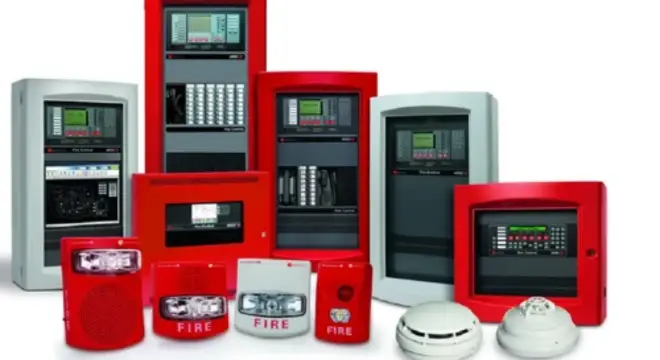How EVAC Systems Revolutionize Building Safety: Key Benefits and Insights?
Have you ever observed someone getting lost at a crowded departmental store or at a multi-storey office building when there are emergency criers around him? There is something beyond just an alarming siren; it directs well with clear explicit instruction. Can a system actually save lives in such situations when clarity surging over fear takes place during the high-stress scenes?
Emergency Voice Alarm Communication System does that exactly. These latest systems insulate the old alarms and replace them with a clear, to-the-point voice message. EVAC systems are changing the current emergency-normal with more enhanced safety for the helpless population and faster evacuations in case of an actual fire incidence.
In this article, we’ll explore the many benefits of EVAC systems and why they’re becoming a critical component of modern building safety.
What Are EVAC Systems?
EVAC is a short form that stands for Emergency Voice Alarm Communication. It can be defined as special public address equipment designed to work in emergency conditions to facilitate orderly and safe removal from premises. These usually occur in areas such as a shopping mall, airport, stadiums, and office building, where timely communication is most important during crisis scenarios.
How They Work
1. Live and pre-recorded voice messages
- EVAC systems enable live audio announcements for more special or Exchange situations, while using recorded messages for routine scenarios (such as fire evacuations).
2. Integration with Emergency Lighting and Fire Alarms
- To ensure an Organized response, these systems cooperate with emergency lighting and fire alarms. For example, EVAC systems broadcast Command and direct residents to the safest leaving routes when a fire alarm is triggered.
Key Benefits of EVAC Systems
1. Faster Response and Reduced Panic
(i). How Voice Instructions Reduce Confusion
In emergencies, clear instructions can make all the difference. Traditional alarms usually just make a loud noise, which can cause confusion and panic. EVAC systems, however, use voice messages to guide people, telling them exactly what to do. For example, instead of just a siren, the system might say, “Please evacuate the building through the nearest exit.” This clarity helps people act quickly and calmly.
(ii). When Traditional Alarms Fail
Imagine a fire alarm going off in a crowded shopping mall. The loud noise tells everyone to evacuate, but it doesn’t tell them where to go or what to do. In a large building, this can lead to chaos. EVAC systems solve this problem by giving clear instructions for specific areas, guiding people to safety in an organized way.
2. Customizable Emergency Instructions
(i). Tailored Instructions for Different Emergencies
Every emergency is different. EVAC systems can provide customized messages for different situations. For example, if there’s a fire, the system might tell people in a certain area to leave the building immediately, while if there’s a gas leak, the instructions could be to stay where they are and wait for further guidance. This makes the response more appropriate to each situation.
3. Enhanced Safety for Vulnerable Populations
(i). Helping People with Disabilities
EVAC systems are especially helpful for people with disabilities. For those who are deaf or hard of hearing, visual signals (like flashing lights) are added alongside the voice instructions. People with mobility challenges can also receive instructions about the safest evacuation routes for them, such as accessible exits.
(ii). Multi-Language Support
In places like airports, shopping centers, or office buildings where people speak different languages, EVAC systems can broadcast messages in multiple languages. This ensures that everyone, regardless of their language skills, understands what they need to do in an emergency.
4. Integration with Modern Technology
(i). Connection with Other Building Systems
EVAC systems can be connected to other smart building systems, such as fire alarms and emergency lighting. This integration ensures that everything works together, providing a smoother and faster response. If a fire is detected, for example, the system can automatically trigger the alarms and the evacuation messages without delay.
(ii). Real-Time Alerts
These systems can also connect with sensors and devices in the building, providing real-time updates. If smoke or a fire is detected, the EVAC system will automatically activate and notify everyone instantly, helping them respond faster.
5. Regulatory Compliance and Reliability
(i). Following Safety Standards
EVAC systems must follow strict safety regulations, like the EN 54 standard in Europe, to ensure they work reliably. These standards help make sure that the system is effective in an emergency, providing the right kind of response to keep people safe.
(ii). Why Compliance Matters
Adhering to these safety standards is important because it ensures the system will perform properly during an emergency. Without this compliance, there’s a risk that the system might not work when needed most, putting people’s safety at risk.

How EVAC Systems Improve Overall Building Safety
1. Complementing Fire Safety Protocols
EVAC systems work alongside traditional fire alarms to provide clear voice instructions during an emergency. While fire alarms alert people to danger, EVAC systems guide them on where to go, which exits to use, and how to stay safe, reducing confusion and speeding up evacuation.
2. Role in Evacuation Drills and Training
EVAC systems are used in evacuation drills to give people real-time practice with voice instructions. This helps them become familiar with emergency procedures, ensuring a faster and more organized evacuation in real situations.
3. Examples of Reduced Casualty Rates
Buildings with EVAC systems typically see fewer injuries and fatalities during emergencies. Clear instructions help guide people to safety faster, reducing the risk of confusion and mistakes that can occur with traditional alarm systems.
Future Trends in EVAC Systems
a. Technological Advancements
AI-driven Voice Systems
Future EVAC systems will incorporate artificial intelligence to provide more personalized and context-aware communication. These AI systems can adapt to the situation, offering tailored instructions based on real-time data, ensuring that the messages are relevant and specific to the emergency at hand.
Real-time Data Analysis for Adaptive Responses
EVAC systems will become more intelligent with real-time data analysis. These systems will analyze the situation as it unfolds and adapt their instructions accordingly, such as adjusting evacuation routes based on crowd movement or changing conditions in the building.
Mobile App Integration
Mobile apps will become an integral part of EVAC systems, allowing users to receive instant alerts and guidance directly on their phones. These apps can provide personalized evacuation routes, real-time updates, and safety information, ensuring that people stay informed and can act quickly in an emergency.
b. Sustainability in EVAC Systems
Energy-efficient Components
The future of EVAC systems will focus on sustainability by using energy-efficient components. Low-power technologies and renewable energy sources will be incorporated, reducing the overall energy consumption of these systems.
Cost Savings and Environmental Impact
Over time, the shift to energy-efficient EVAC systems will result in long-term cost savings. These systems will not only lower operational costs but also reduce their environmental footprint, helping buildings meet sustainability goals while maintaining safety.
Choosing the Right EVAC System
1. Factors to Consider
(i). Building Size and Type
The size and type of your building play a significant role in choosing the right EVAC system. Larger buildings or multi-story structures require more advanced systems with multiple zones and more complex evacuation routes. Smaller buildings may need simpler systems. It’s important to assess your building’s layout and occupancy to choose a system that fits its unique needs.
(ii). Regulatory Requirements
Different regions have specific safety regulations and standards for emergency systems, such as the EN 54 standard in Europe or local fire safety codes. Ensure the EVAC system you choose complies with these regulations to meet legal requirements and ensure safety.
(iii). Budget and Scalability
Consider your budget and the future growth of your building. While more advanced systems can be expensive, they may offer better scalability and long-term benefits. Choose a system that meets your immediate needs while allowing for future upgrades as your building’s needs evolve.
2. Tips for Evaluating System Vendors
(i). Experience and Reputation
Choose a vendor with a proven track record in delivering reliable EVAC systems. Check reviews, certifications, and case studies to ensure the vendor is experienced in your industry or building type.
(ii). Customer Support and Maintenance
Ensure the vendor offers strong customer support and maintenance services. EVAC systems need to be tested and maintained regularly to function properly, so reliable support is essential.
(iii). System Customization
Some vendors offer customized solutions tailored to your specific building requirements. Evaluate whether the vendor can adapt the system to your building’s size, layout, and emergency needs.
FAQs
1. What is the cost of installing an EVAC system?
The cost depends on the size and complexity of the building, as well as the system’s features. Basic systems for small buildings can be more affordable, while advanced systems for large or multi-zone buildings will cost more.
2. Are EVAC systems suitable for small buildings?
Yes, EVAC systems can be tailored to fit buildings of all sizes. Smaller systems are available with simpler configurations to meet the needs of small buildings while maintaining safety.
3. How often should EVAC systems be tested?
EVAC systems should be tested at least once every six months to ensure they are functioning correctly. Regular maintenance is essential to ensure reliability during an emergency.
Conclusion
EVAC systems are a vital part of modern safety strategies, ensuring faster response times, reducing panic, and enhancing safety for everyone, including vulnerable populations. Their ability to provide clear, actionable instructions during emergencies makes them indispensable for any building.
If you’re considering upgrading or implementing an EVAC system, now is the time to prioritize safety. Feel free to reach out to us for expert guidance and solutions tailored to your building’s needs.


